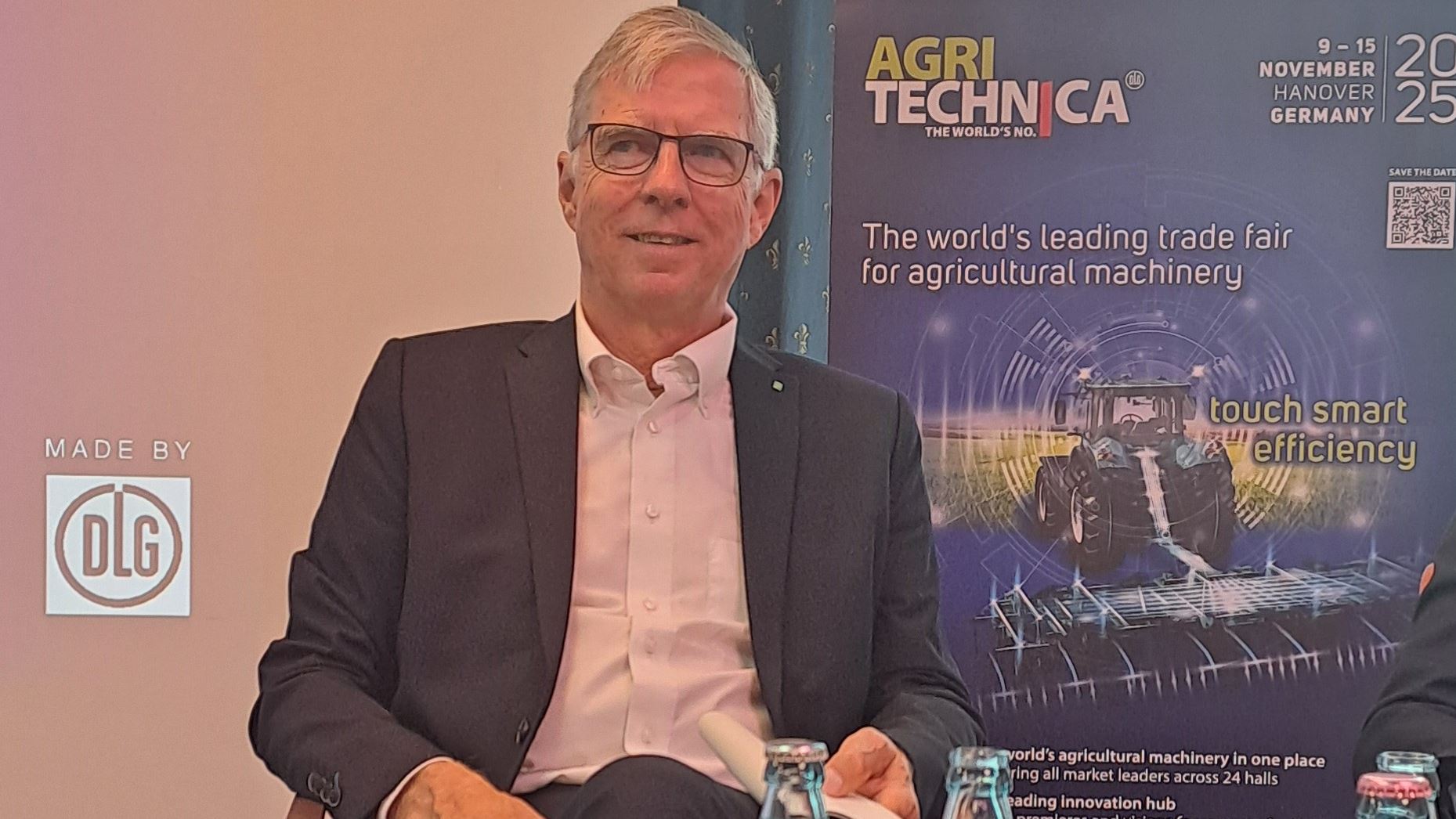22 September 2025 - Agritechnica will be presenting the current status of agricultural machinery from 9 to 15 November 2025 in Hanover and will be showcasing many interesting innovations in addition to numerous new products.
Soil tillage and seed bed preparation
Several concepts that can offer new potential solutions will be presented for soil tillage and seed bed preparation at Agritechnica 2025. To achieve shallow cultivation in post-harvest management, coulters are guided individually in order to maintain the set depth over changing surfaces. Improved formulations for the carbide wear protection significantly increase the durability of cultivator coulters. A new housing for rotary tillers that can be folded open hydraulically makes cleaning and maintenance work more effective, simpler and above all safer.
Machinery and equipment for drilling and sowing
The technological trends in machinery and equipment for drilling and sowing involve the continued combination of work steps in one single pass, such as sowing and hoeing, which significantly increases efficiency. Another important trend is the combination of sowing and under-root fertilisation as well as precise tool guidance. Applying variable quantities of seeds according to soil zones increases yields and reduces seed consumption. Sensors and AI-backed decision support systems (DSS) optimise sowing in real time. Data transfer and data exchange between machines are also becoming increasingly important. Sowing various crops is another topic on which manufacturers are picking up.
Machinery and equipment for fertilisation
The trend in slurry application is continuing to shift towards low-loss, precise and needs-based nutrient application, for which manufacturers are developing lighter machines with high efficiency, improved trailing shoe and drag hose distributors as well as alternative systems. Precision application is also continuing to gain in importance, while section control remains a central element for efficient slurry application. Focus is also on maximum precision and automation in mineral fertiliser application. Manufacturers are also increasingly focusing on combination methods in which tillage or sowing is combined with fertilisation.
Machinery and equipment for plant protection
Many equipment manufacturers are extending their portfolios with front-mounted tank systems, container volumes and self-propelled vehicles in order to increase efficiency in crop protection. Hoeing systems are being elevated to a higher level thanks to new technology. Band application has become more user-friendly thanks to new nozzles and crop sprayer systems, while spot application finally arrived in the high-tech sector. Band treatment systems that control weeds by means of laser technology are being used as an alternative to chemicals and hoes. There are numerous further developments in nozzle technology. Many potential solutions will also be on show at Agritechnica 2025 in the area of autonomous systems – i.e. robots.
Machinery and equipment for irrigation
Technical solutions foster precise irrigation that is adapted according to needs and contribute extensively to the economical and low-loss distribution of the available quantities. Soil moisture sensors are able to supply relevant information about the soil's water balance. Alternatively, planning can be carried out using models in which the irrigation time and quantity are calculated with the aid of the climatic water balance. Drip irrigation is continuing to gain in importance. Automation and labour time savings are also becoming increasingly important.
Tractors
Nowadays, the focus in combustion engines is on the use of alternative fuels and on the 'peripherals' of classic diesel engines. Besides evolutionary further developments, a new drive concept for improved traction, safety and turf protection will be on show in the area of gearboxes. Hydraulic systems are being continuously further developed. The portfolio of battery-electric tractors is being extended. There is also a great deal of momentum in the area of electronics and assistance systems aimed at increasing the efficiency of the drive train and driver safety.
Combine harvesters
The trend towards belt cutting systems with large working widths is continuing in machinery and equipment for harvesting threshing crops. Focus is increasingly shifting to the adjustment of harvesting headers to various harvesting conditions by means of loss scanners or even automation. The efficiency of threshing capacity and sensor values is being further improved through forward-looking sensors and NIRS technology with a reduced error rate. However, attention is also being paid to what are ostensibly 'minor' details such as new cutting systems with quick-change technology for knife guards and blades. Safety is being improved by camera systems instead of rear-view mirrors or the additional animation of danger zones around the combine harvester as well as by intelligent chassis drive technologies on hilly terrain.
Machinery and equipment for potatoes
One focus of development remains the 'correct' form of the end ridge, for which manufacturers are offering a wide range of rigid or rotating ridge forming elements. Two-row bunker harvesters are continuing to gain in market share and have already ousted one-row harvesters as the standard machine in numerous regions throughout Germany. Farms are attempting to compensate for the limited availability of sorting personnel for the harvesters by increasingly using automatic separating facilities in the storage path. Increasing demand for longer storage times is being reflected in the increasing spread of forced ventilation systems and mechanical cooling systems.
Sugar beet harvesting
A certain plateau appears to have been reached in the general trend towards performance- and cost-oriented, fully automated mechanisation in the beet harvesting segment. Large self-propelled beet harvesters with bunkers and cleaning machines are now standard. An increasing number of machine manufacturers are also offering technical solutions for processing beets for biogas plants. Great attention must be paid to ergonomic operation in comfortable high-tech driver's cabs. Touch screen technology is aimed at relieving the machine operator even further; operations are being increasingly automated. In combination with the latest tyre technology, offset track driving ensures efficient harvesting that is gentle on the soil.
Post-harvesting technology
Post-harvesting technology encompasses all processes, equipment and methods that maintain the quantity and quality of harvested products, often relying on automation and improving work ergonomics at the same time. Several technical trends are emerging here irrespective of crop type and harvested product. These are focused on sensor-controlled automation (increasingly optical systems), efficiency improvements (particularly in terms of energy), digitalisation (IoT, FMS) and AI integration, sustainability (avoidance of losses and reduced use of farm inputs) and flexibility (scalability).
Machinery and equipment for harvesting feed
From mowing to harvesting, all developments are aimed at handling the harvested crop according to its intended use, high efficiency and increasingly relieving the drivers' workload. This includes larger working widths for mower implements as well as determining the dry matter content of the harvested crop during mowing and electric inclination adjustment of the rotary tedder from the tractor cab. The new short cutting method has become established in self-loading trailers. The latest generation of forage harvesters is achieving new dimensions in performance in multiple regards. The big baler has been redesigned, from its drive to the density control system and the knotter.
Special crops
Manufacturers are increasingly offering autonomous or semi-autonomous weed control systems in order to counteract labour shortages. Autonomous carrier platforms for special crops are also being presented, including a family of robots for mowing, ploughing and spraying. A digital system is enabling variable, tree-specific precision fertilisation using satellite images. Exciting developments are also available with regard to time-saving machine handling, such as a quick-change system for carrot harvesters.
Machinery and equipment for municipal applications and forestry
The area of machinery and equipment for municipal applications and forestry is characterised more by consistent further developments than innovations. The existing trend towards increased efficiency is also set to continue at Agritechnica 2025, and is also joined by the factor of versatility. In times of skilled labour shortages, increased working comfort can prove to be a crucial competitive advantage when looking for scarce staff. One interesting example in this context is a self-propelled wood chipper with a cab that is tailored specifically and holistically to the daily work of the chipper driver.

